Honeycrisp Apple Tree
Description
A modern apple in high demand. Outstanding fresh-eating qualities make this variety an American favorite. Fruit is aromatic and sweet as honey with an explosively juicy, crisp texture. Grow this naturally compact tree even in small spaces.
Originating from Excelsior, Minnesota in 1974, the Honeycrisp apple tree is cold-hardy and thrives in USDA Hardiness Zones 3-8. The dwarf variety typically reaches a height of 8-10 feet, making it ideal for smaller gardens or urban landscapes. Ripens in early September. Pollinator required.
The Honeycrisp apple is famous for its unique combination of sweetness and crispness, making it perfect for fresh eating. Beyond enjoying them straight from the tree, Honeycrisp apples are also great for baking, adding a delightful crisp sweetness to pies, and even making homemade cider. The fruit can be stored for up to six months under refrigeration, retaining its crisp texture and flavor.
Honeycrisp Apple Tree Pollination
What are the best pollinators for a Honeycrisp apple tree? Cross-pollination is essential for high yields and healthy fruit production. Explore our list of the best pollinators: Honeycrisp Apple Tree Pollinators ›
Harvest and Care
These are fast-growing fruit trees that should begin producing a crop in two to three years after planting. Harvest your Honeycrisp apples in early September when they reach peak ripeness. For best results, plant in loamy, sandy, well-drained soil and ensure the tree receives full sun throughout the day. Read more about how to grow apple trees ›
You might also be interested in our Honeycrisp Crosses apple tree varieties. Apples that taste as good as their parent.
Calcium improves fruit quality and is especially helpful in growing Honeycrisp apple trees.
Survival Guaranteed!
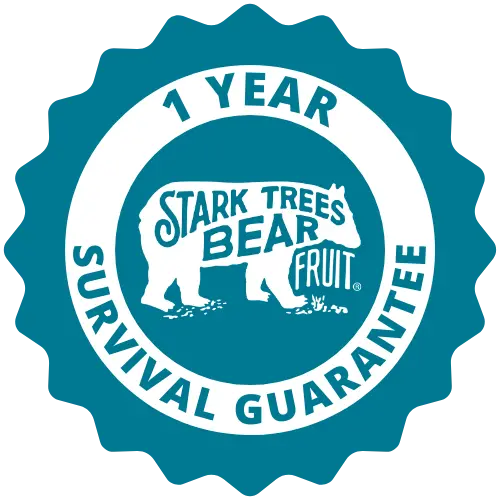

Since 1816, Stark Bro’s has promised to provide customers with the very best fruit trees and plants. It’s just that simple. If your trees or plants do not survive, please let us know within one year of delivery. We will send you a free one-time replacement, with a nominal shipping fee of $9.99. If the item in question is not available, we can issue a one-time credit to your account equaling the original product purchase price or issue you a refund. Read more about our warranty policy.
Characteristics
| Bloom Color | White |
| Bloom Time | Mid - Late |
| Chill Hours | 800 - 1000 |
| Fruit Color | Red |
| Fruit Size | Large |
| Hardiness Zone Range | 3 - 8 |
| Pollination | Pollinator Required |
| Ripens/Harvest | Early September |
| Shade/Sun | Full Sun |
| Soil Composition | Loamy |
| Soil Moisture | Well Drained |
| Soil pH Level | 6.0 - 7.0 |
| Taste | Sweet |
| Texture | Crisp, Juicy |
| Years to Bear | 2 - 5 |
Size & Spacing
Mature Size
| Semi-Dwarf | 12 - 15' tall x 12 - 15' wide |
| Dwarf | 8 - 10' tall x 8 - 10' wide |
Recommended Spacing
| Semi-Dwarf | 12 - 15' |
| Dwarf | 8 - 10' |
Zone Compatibility
Pollination
Tools & Supplies
Planting & Care
Learn all about how to grow apple trees in The Growing Guide. An entire section of our website dedicated to your growing success.
Shipping Information
Arrives when it's time to plant
Questions & Answers
I have Honey Crisp planted in zone 9A. It is in its 3rd year and doing very well. I do have it planted in the noon shadow of a 100' tall sweet gum. It gets full sun for daybreak to 10:30ish and then from 3:00ish to dark
I think the root stock used is very important. In my search, I found root-stocks are not all the same; some more hardier than others. I'm hoping the trees we purchase DO have hardy root-stocks!
Honeycrisp blooms in the early season for apples, starting about 2-5 years after planting. The fruit ripens around September.
Try KinderKrisp, Wolf River, or Yellow Transparent. Even edible crabapples like Chestnut or Whitney will work.
Most Apple trees will bear every other year unless you thin them by culling immature apples until there are only one or two per cluster. If you do that the remaining apples will be larger and the tree will bear every year. The University of Minnesota Extension website is an excellent resource for additional information.
Warm is generally not good for apple trees; they need a certain amount of time below a certain temperature to go dormant and complete the fruiting cycle. We have just introduced 4 new Honeycrisp crosses that can all be successfully grown in the warmer climates of Zones 5-7. You may want to read about them: Stark® Scarlet Crush™, Stark® Ruby Darling™, Stark® Hart's Fancy™ and Stark® Red Romance™.
Thank you for your question. The reason is "chill hours." Many fruit varieties require a certain number of hours in a certain range of temperatures in order to go dormant, and then start their production cycle all over again. Honeycrisp™'s estimated chill hours are 800-1,000 hours below 45°F. If your zone doesn't reliably have those kind of temperatures, your tree will not produce fruit.
Yes Best results with a fertilizer for fruit trees.
Planting guidelines for non-dwarf honey crisp trees dictate a 10-15 (8 minimum) foot radius from the center of the tree needs to be clear of other trees. Ground cover plants that won't compete for resources are just fine.
Full sun is needed for proper development of almost all fruit plants, if you live in a very hot area then partial shade is OK but the plant needs direct sun for at least 5-6 hours a day. If you can't do that either get artificial lights or you may just end up with a nice looking but barren tree.
A 6 inch perforated drain tile works well and keeps the deer off. the tree will expand the tile as necessary

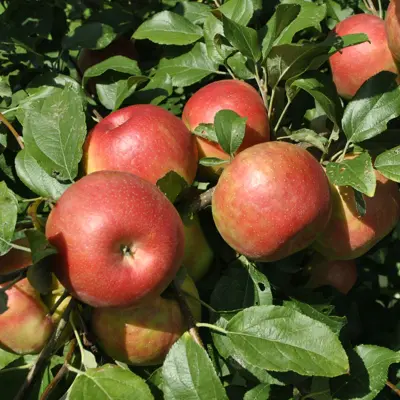
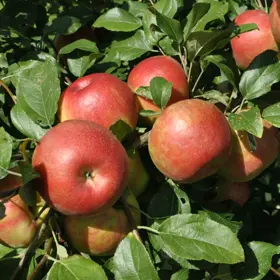
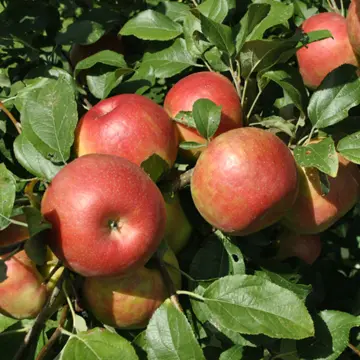
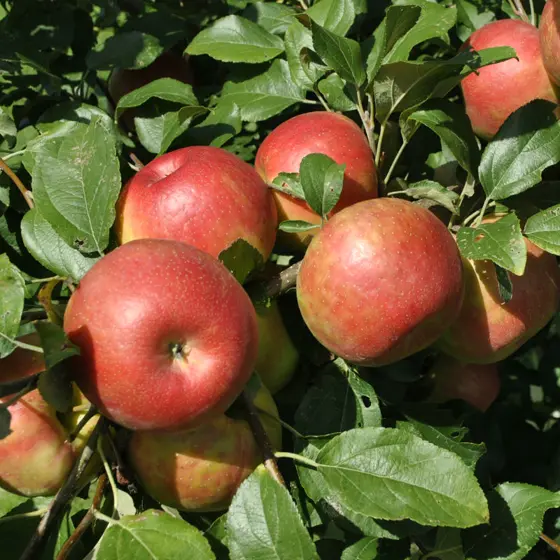
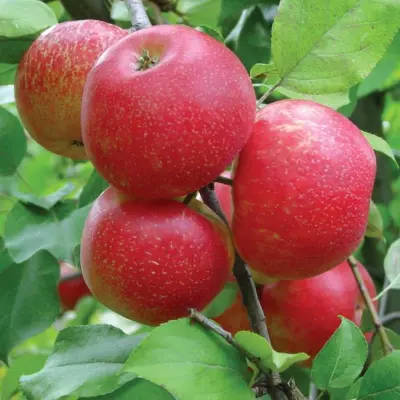
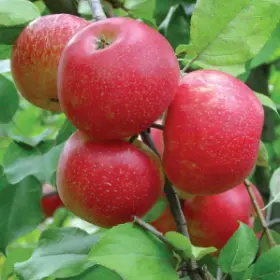
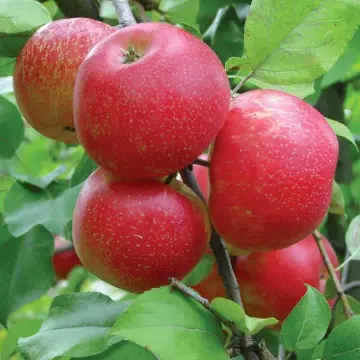
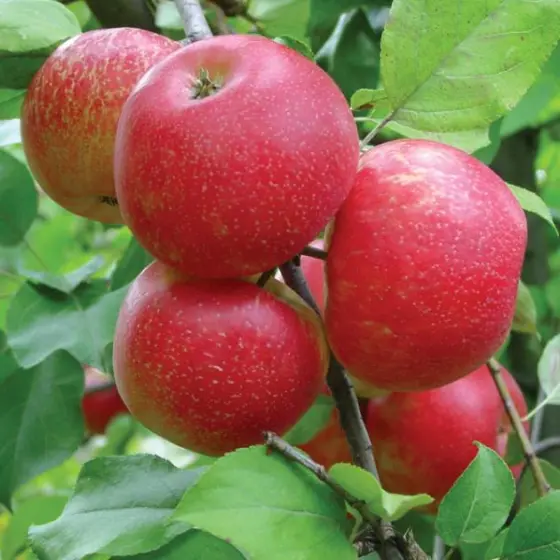
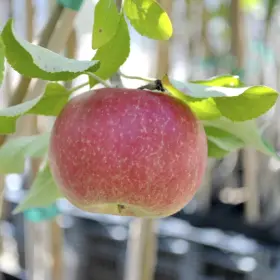
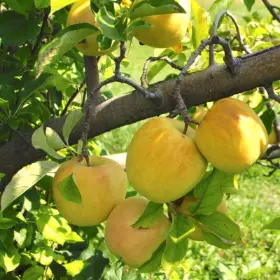
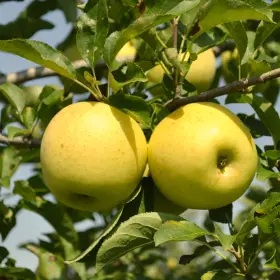
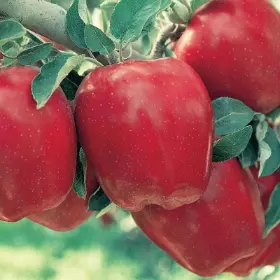
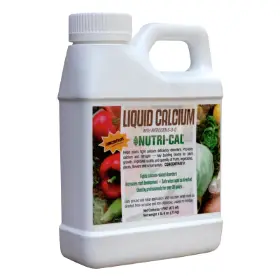

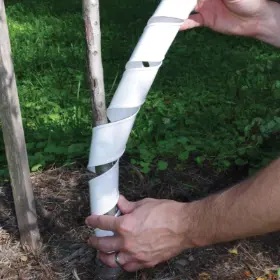
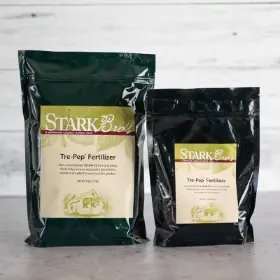
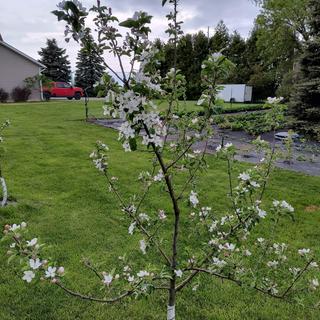
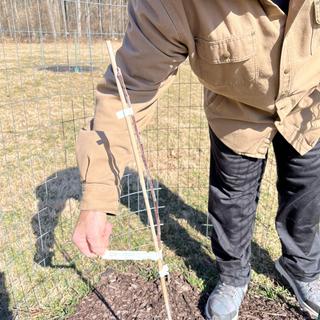
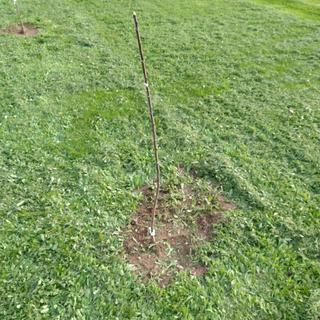
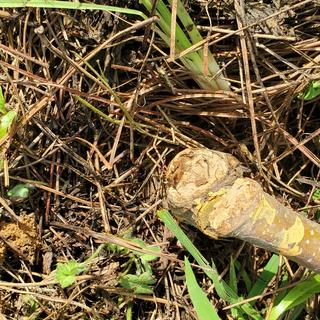


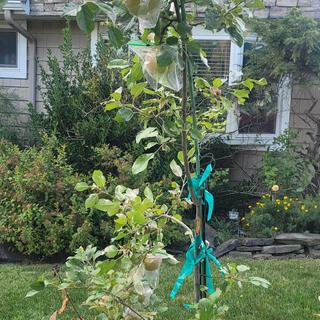
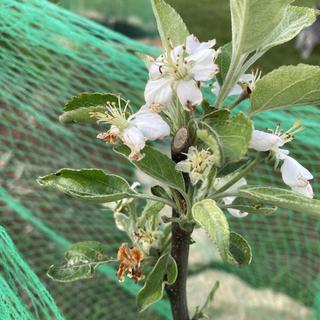
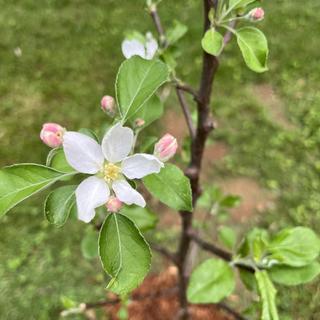
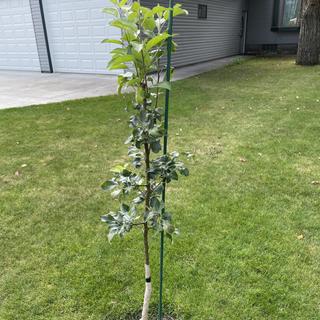
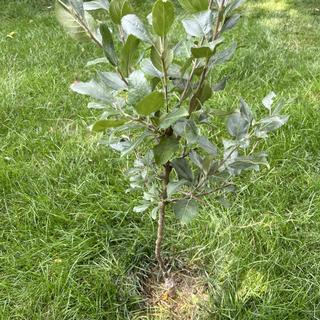
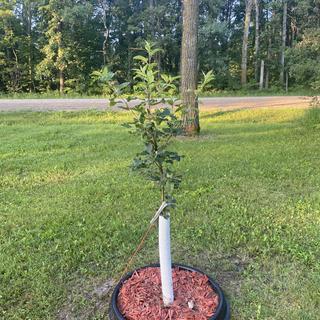
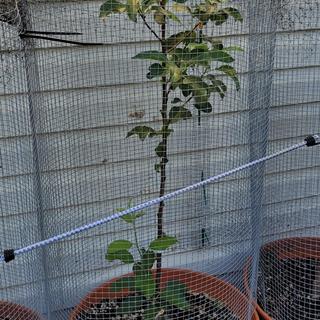
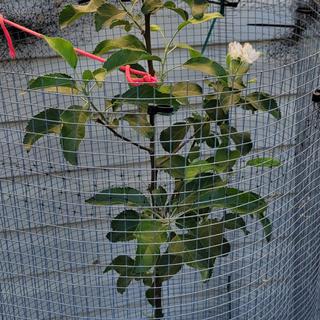
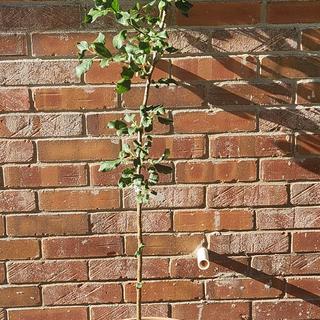
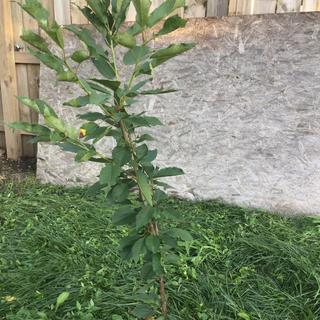
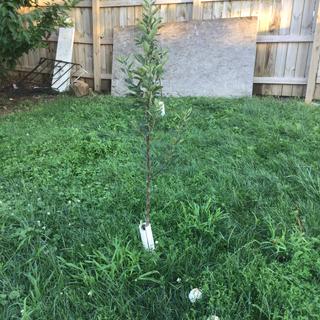
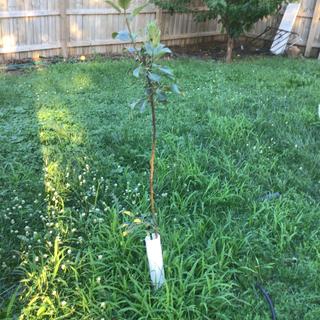

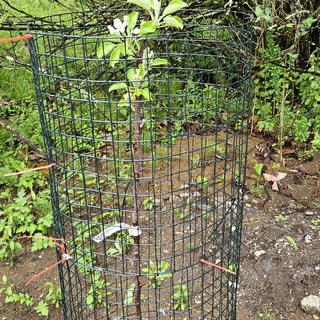
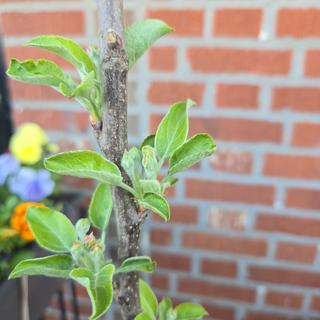
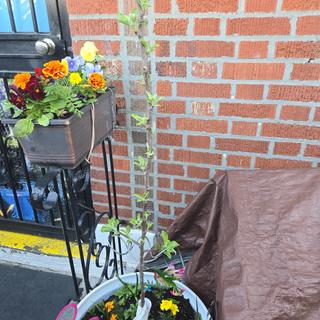
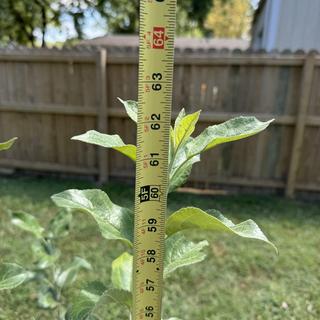
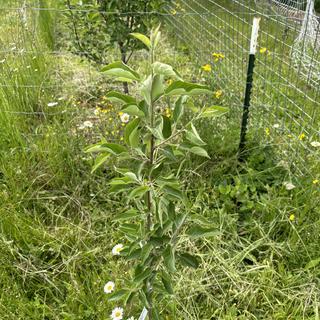
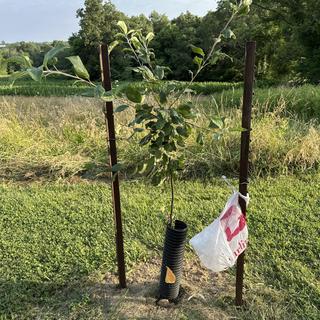
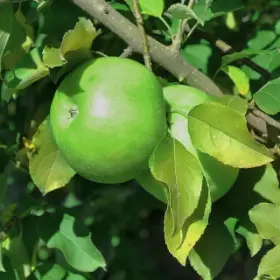
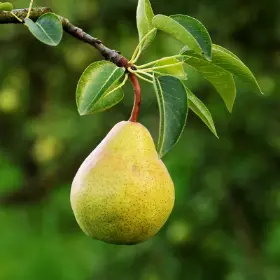
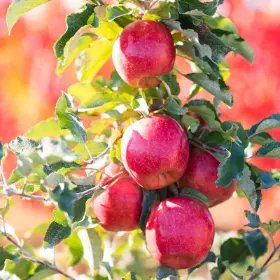
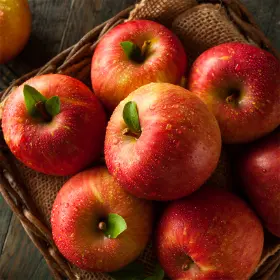
This is the second apple tree that I have purchased form Starkbros, the first one has been in the ground for a year and is growing beautifully! I needed a second apple tree to pollinate the first…
We have been planting Stark brother's fruit trees for 110 years. Always a great success with them!
To replace the one that never grew
We like these apples and they are a pollinator for the Pink Lady tree we got as well.